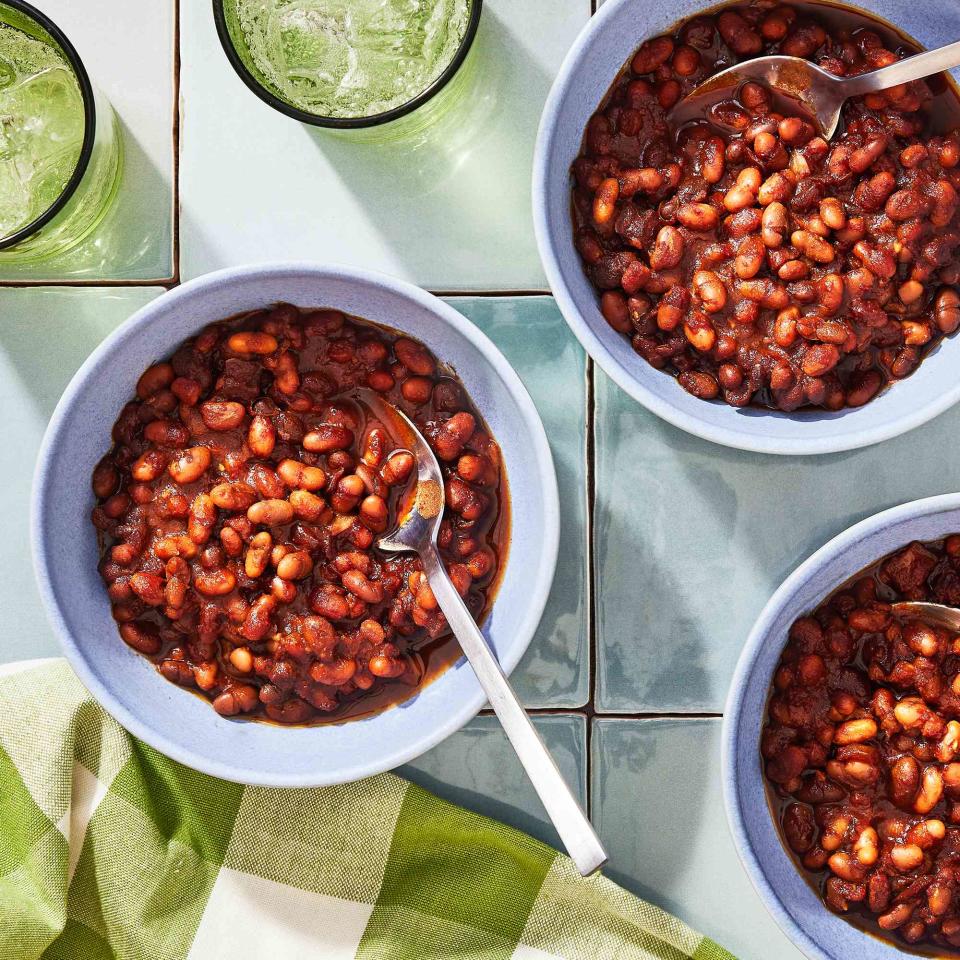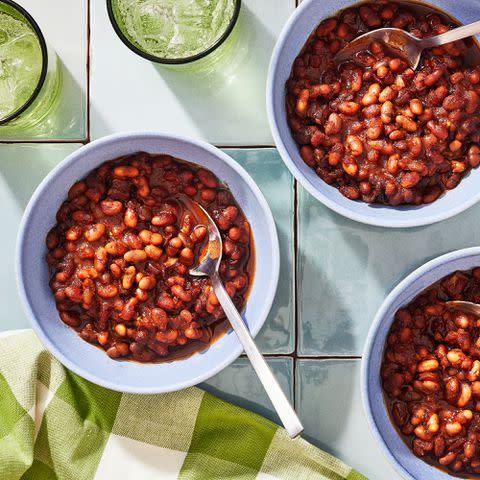The 3 Best High-Protein Carbs to Eat for Lower Blood Sugar, According to a Dietitian
No, you don't have to cut out carbs for the sake of blood sugar management.

Reviewed by Dietitian Maria Laura Haddad-Garcia
According to the Centers for Disease Control and Prevention, about 1 in 10 Americans have diabetes, with over 90% of cases being type 2 diabetes. When it comes to managing diabetes, dietary changes can play a significant role. You may think you need to eliminate or seriously reduce your carb intake to manage your blood sugars, but this isn't necessarily true. While closer consideration of carb intake is typically helpful for diabetes management, it doesn't mean you can't still enjoy carbs! Protein can help offset blood sugar spikes, and some carbohydrates are also good protein sources. Learn the best high-protein carbs for blood sugar management and what to look for in a blood-sugar-friendly snack.
Related: The Sneaky Way Diabetes Affects Metabolism, According to a Dietitian

The Best High-Protein Carbs for Better Blood Sugar
1. Beans
Next time you're looking for a protein source for a meatless Monday (or any day for that matter), look no further than beans (or their close cousins, other types of legumes). While their carb content may concern some folks with diabetes, their protein and fiber help offset their impact on blood sugars. "Beans have a great amount of protein in them, and bonus, they have fiber too, which also slows down digestion. For some, this can feel more satisfying, plus that blood sugar management bonus," says Ashley Munro, M.P.H., RDN, CDCES, an instructor at the School of Nutritional Sciences and Wellness at the University of Arizona. Our Slow-Cooker Baked Beans (pictured above) are a delicious way to manage your blood sugar.
Related: What Happens to Your Body When You Eat Beans Daily … or Every Other Day
2. Yogurt
Dairy products, specifically milk and yogurt, are another source of carbs and protein. The carb and protein content of yogurt varies based on the type, with traditional yogurt being lower in protein and higher in carbs than Greek yogurt. Either way, the protein and fat content helps prevent rapid blood sugar spikes. Plus, Munro says, "Yogurt can be a fun vehicle to adding nutrients like fruit (for fiber) and nuts. Texture can impact how we enjoy foods, so that creamy-crunchy combo can be a nice experience."
Emerging research, including a 2020 study in the World Journal of Diabetes, has demonstrated a relationship between gut health and diabetes, so the probiotic boost from yogurt may amplify this food's benefits for those with diabetes.
3. Legume Pasta
With more and more food innovations lining grocery store shelves, there are new fun ways to help manage diabetes through your diet. Over the last few years, one of these newer food inventions is legume pasta, made with protein sources like chickpeas, lentils and yellow peas rather than durum wheat. These can have around four times as much protein and half as many carbs as traditional pasta, which can help offset blood sugar spikes. If you have diabetes, this prevents you from needing to add as much protein from other sources, like meat, when eating pasta. That being said, while you need to moderate your carb intake if you have diabetes, pasta made from grains, like wheat, rice or quinoa, can be part of a diabetes-appropriate diet.
What to Look For in a Blood-Sugar-Friendly Carb
First, it's best to lean into your preferences when picking carbs. If you ignore your cravings for the sake of health, the changes may not be sustainable, and you'll have to sacrifice satisfaction! Munro says, "Carbs should be what a person wants to eat, enjoys and makes sense from a cultural and accessibility perspective."
From there, she recommends integrating blood-sugar-friendly food combos. She says, "This could look like someone who enjoys crackers, making them blood sugar friendly by adding some protein like lunch meat and fat such as nuts," which helps promote satisfaction without spiking blood sugars like carbs alone would.
Here are tips for choosing blood-sugar-friendly carb sources:
High in fiber: Fiber is an indigestible carbohydrate that provides many benefits, such as promoting digestive health, reducing cholesterol levels and stabilizing blood sugars. Since it does wonders for your health and blood sugars, consider choosing high-fiber carbs whenever you can. These include vegetables, fruits, whole grains and legumes.
High in protein: As mentioned above, protein helps balance blood sugars. Munro says, "Protein just takes longer for your body to process, so it helps slow down the journey, which can make you feel satisfied or fuller longer." In addition to this list, other high-protein carb foods include cottage cheese, quinoa, teff, farro, lentils, chickpeas, edamame, green peas, potatoes and spinach.
Related: 10 High-Protein Vegetables
The Bottom Line
Pairing protein with carbs helps offset blood sugar spikes and promotes satisfaction. Rather than avoiding carbs, it can help to think about what you can add to your meal or snack to promote your health and help you feel good. Since everybody is different, Munro says, "It does take some trial and error to see what works the best for someone, but it can really empower them when they start to feel better!" So, consider trying new food combinations and getting curious about how they impact your body. When managing diabetes, it's best to work with a health care provider who can provide individualized guidance and recommendations.

